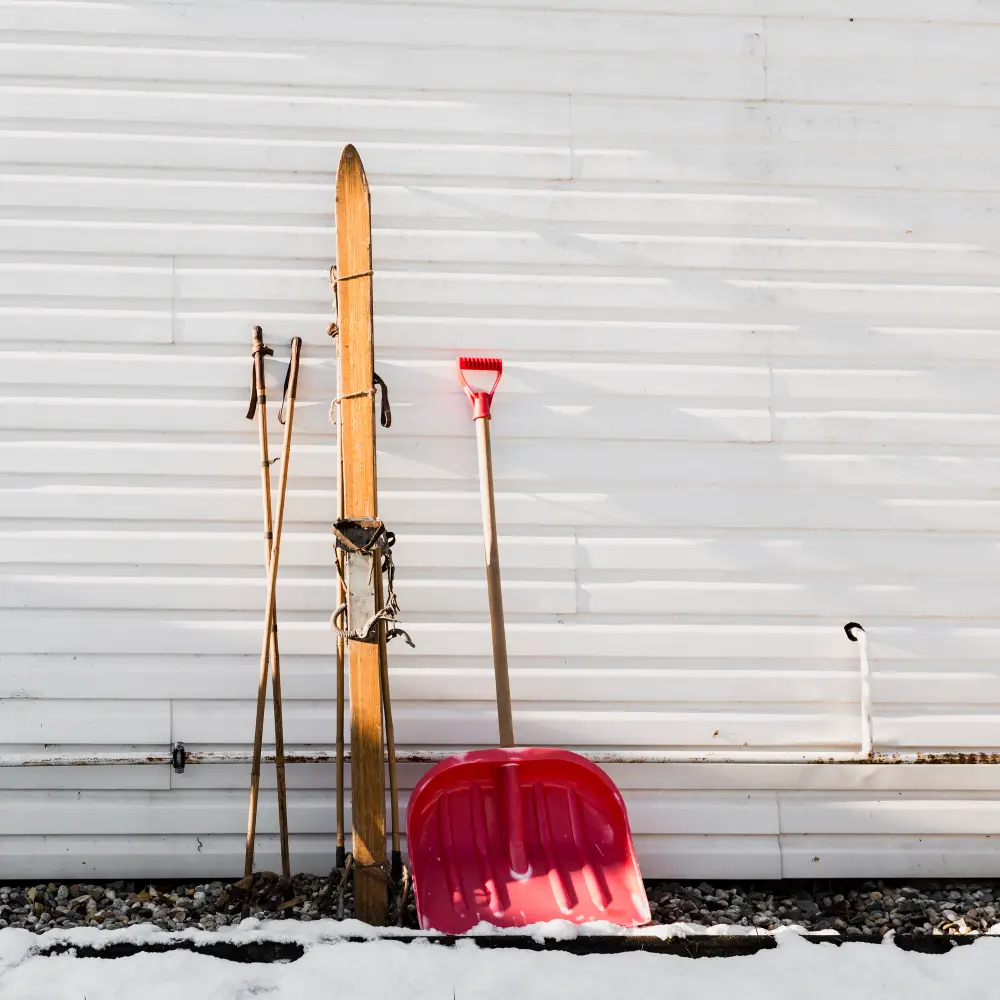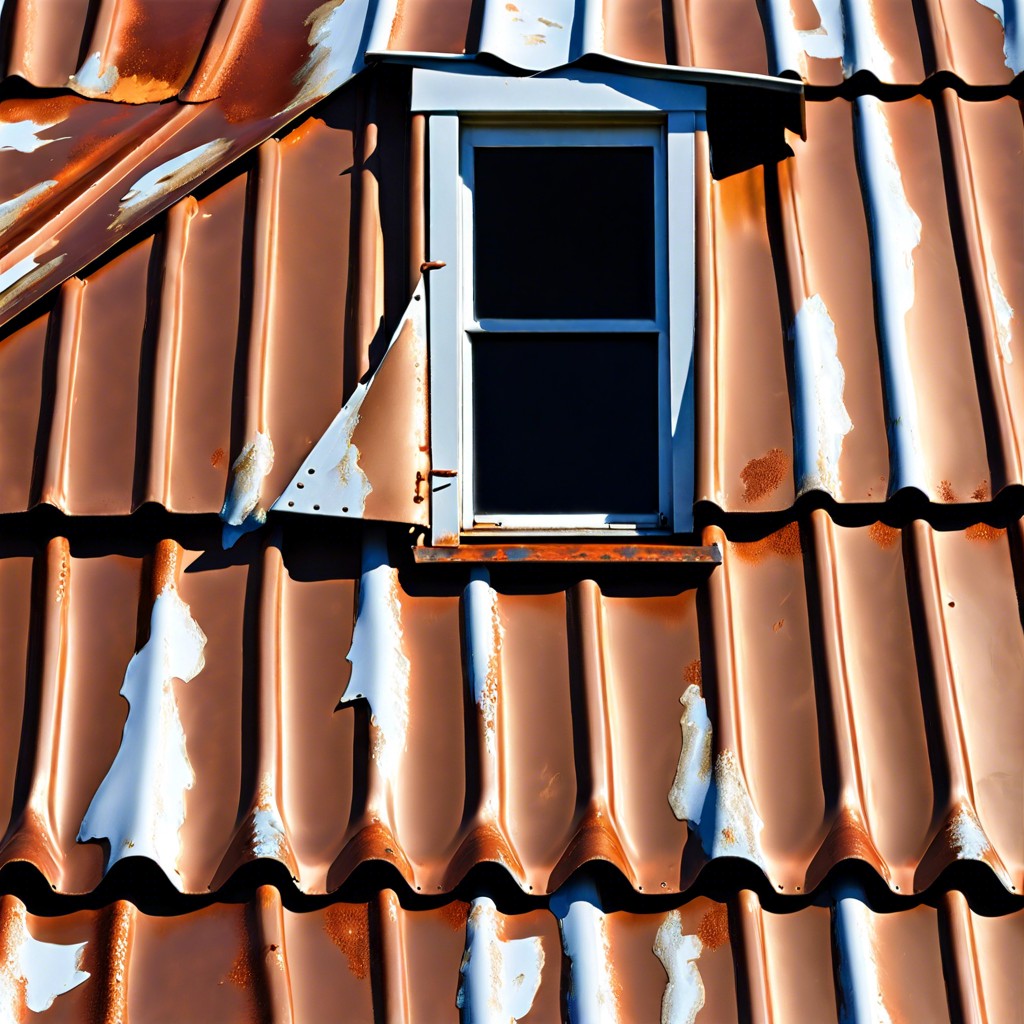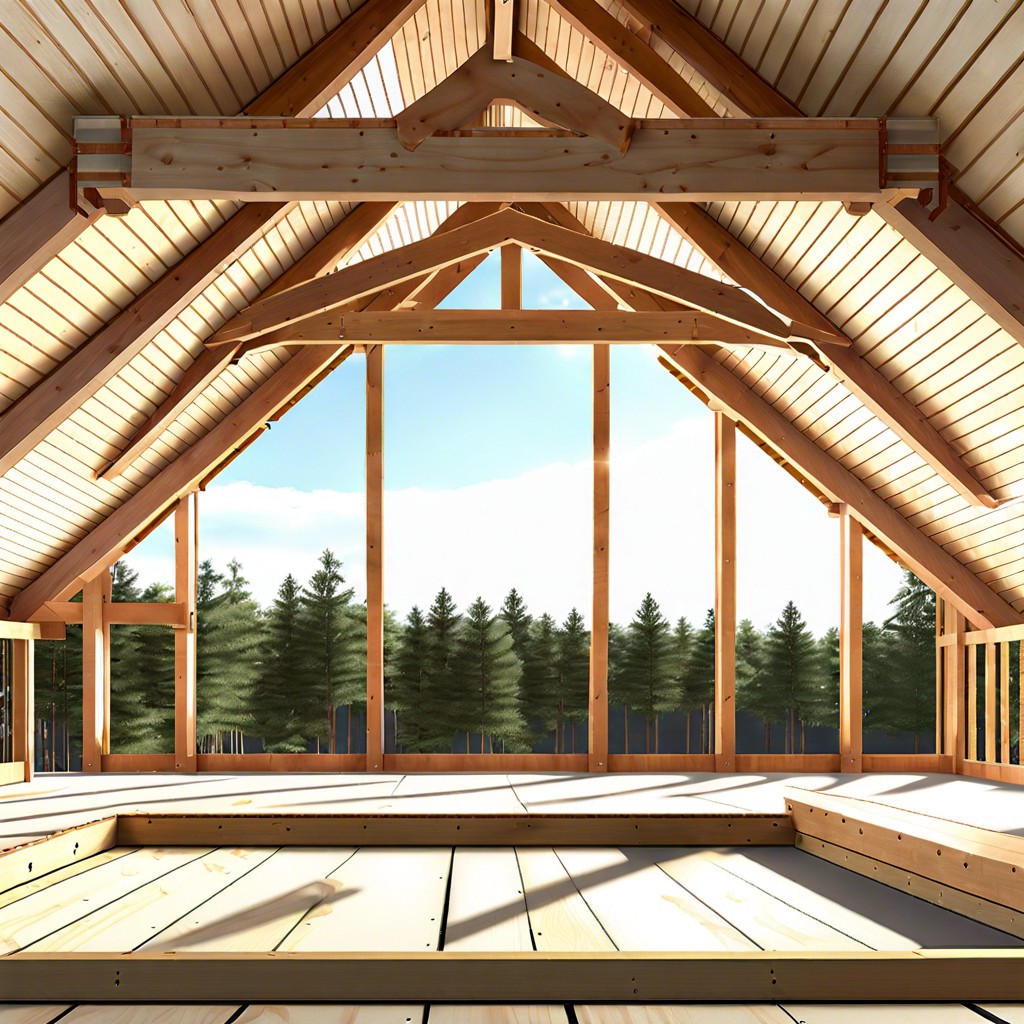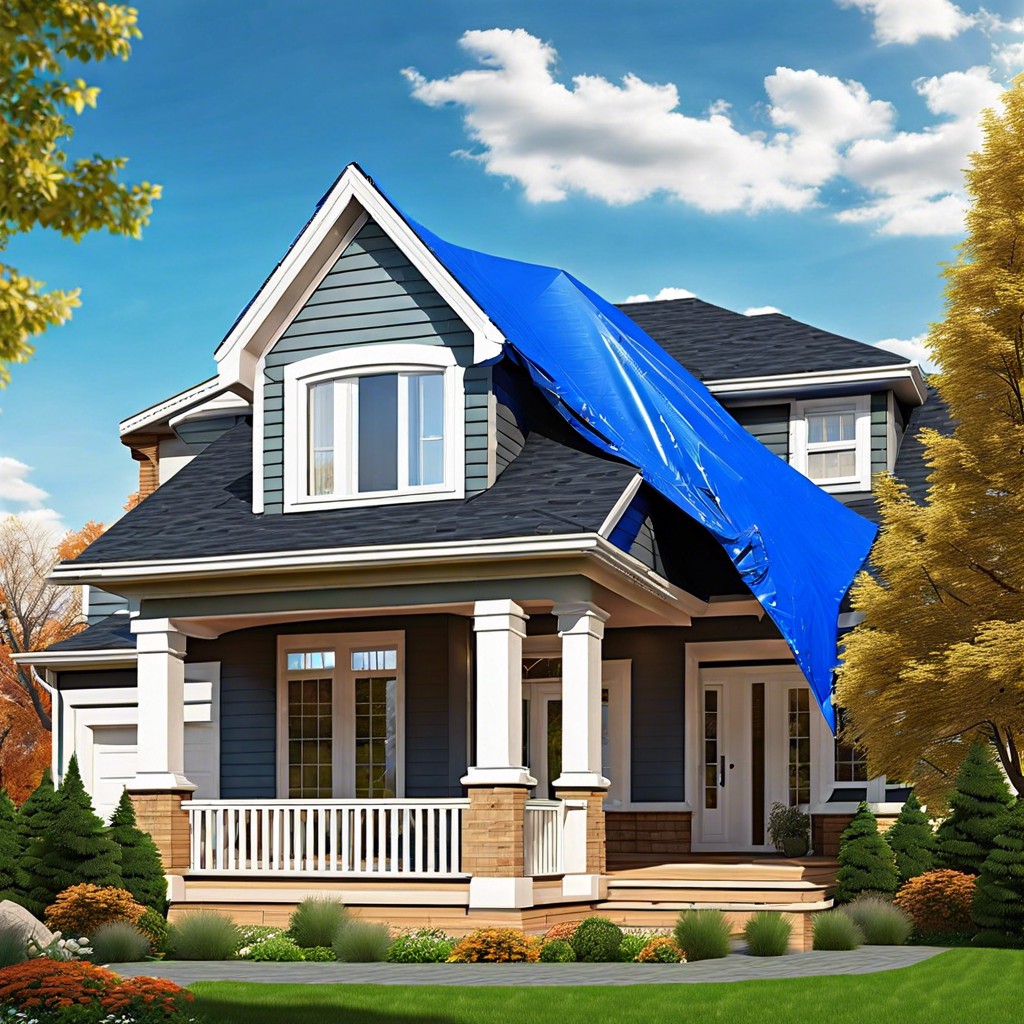Last updated on
Discover how unexpected structural complications led to the roof collapse at Givens Hot Springs, Idaho, because understanding this incident can provide critical insights for future construction and maintenance.
The recent roof collapse at Givens Hot Springs in Idaho serves as a stark reminder of the vulnerabilities that roofs can face, compounded by factors such as material fatigue, heavy snowfall, and neglect.
This unforeseen disaster has had a significant ripple effect, from the immediate financial strain on the business due to interrupted operations and lost revenue to the broader impact on the community’s economy and a heightened awareness of structural safety.
In the following discussion, we’ll delve into the details surrounding the collapse at Givens Hot Springs, examine the aftermath including the economic and social implications, and explore actionable safety measures and prevention strategies vital for property owners to safeguard against similar incidents.
Whether navigating through the complexities of roof maintenance or reinforcing preventative measures, this article equips you with insights necessary to understand and combat roofing challenges before they escalate to catastrophic failure.
Key takeaways:
- Material fatigue, snow accumulation, maintenance issues, age, and design flaws caused the roof collapse.
- The roof collapse led to canceled bookings, revenue loss, employment interruptions, maintenance costs, and the delay in reopening.
- Safety measures include regular inspections, compliance with building codes, load calculations, renovation and repair, and emergency planning.
- The incident had an impact on the community, including reduced tourism and conversations about safety and preservation.
- Future prevention strategies include revisiting building codes, installing early warning systems, regular maintenance, and updated contingency plans.
Event Overview: Givens Hot Springs Roof Collapse
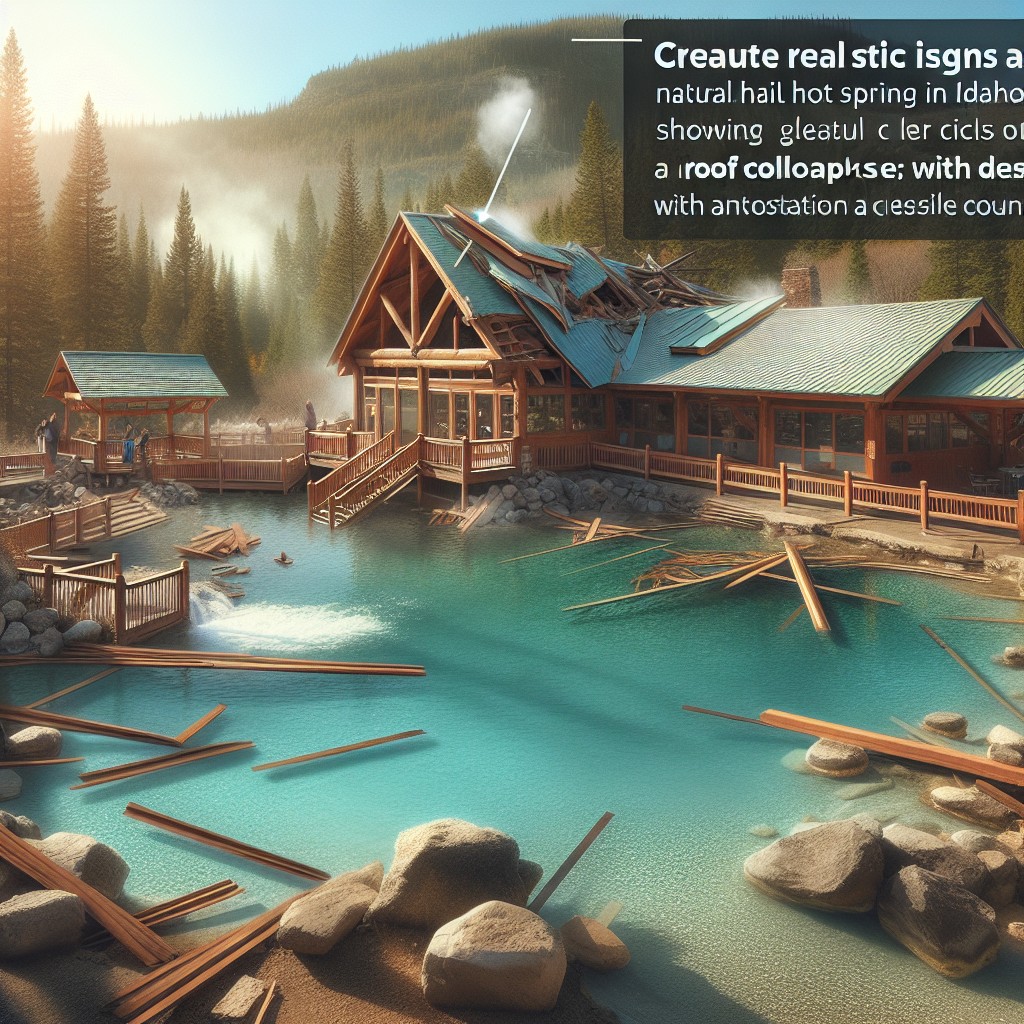
On a seemingly ordinary day, unexpected calamity struck at a popular recreational site. Without warning, portions of the roof gave way, creating a scene of confusion and alarm. Fortunately, no individuals were reported injured in the incident.
The structure, a hallmark of the hot springs, was known for providing respite to visitors from far and wide. At the time of the collapse, the premises were not open to the public, which minimized the potential for injuries.
Authorities were swift to respond, securing the area to ensure public safety and beginning the initial assessments to understand the root cause. The event has prompted a full investigation, with experts examining whether structural weakness, weather-related issues, or maintenance lapses were contributing factors.
As recovery plans unfold, the immediate focus remains on ensuring the integrity of the remaining structures, assessing the full extent of damage, and charting a course for rebuilding and reopening. With the site temporarily closed, the economic ripple effects are felt by employees and the local community that thrives on the patronage of visitors to the hot springs.
Date and Time of the Incident

The roof collapse at Givens Hot Springs occurred in the late evening hours of a typical weekday, bringing a sudden halt to the day’s activities. As the incident unfolded, the hot springs were closed to visitors, and fortunately, no injuries were reported.
The specific timing of the event played a crucial role in ensuring the safety of patrons and staff, given that the venue sees less traffic at that hour. Emergency services were immediately alerted, and their prompt response ensured the situation was quickly brought under control, thus preventing further damage or distress.
With the exact timing documented, investigators and engineers will be able to use this data to better understand the sequence of events leading up to the structural failure.
Location Details

Situated in the scenic southwestern corner of Idaho, Givens Hot Springs is nestled along the banks of the Snake River in Owyhee County. Originally established in the late 1800s, this quaint spot has long been a local attraction.
The hot springs itself is accessible by a short drive from the nearest town of Marsing, about an hour’s trip from Boise. Being a natural retreat, it is surrounded by the picturesque vistas of the Owyhee Mountains and is a part of a small, tight-knit rural community where such incidents deeply resonate with residents and visitors alike.
The facility includes a swimming pool fed by natural hot springs, a fixture for both relaxation and community gatherings, underscoring the importance of the site to the area’s tourism and local culture.
Structure Description

Built in the late 19th century, the structure housing Givens Hot Springs harnessed natural thermal waters for public use. It featured a typical rural architectural style of the era, with simple, wood-framed construction.
The roof, integral to protecting patrons and the integrity of the facility, was designed to bear standard loads, including those from snow and maintenance personnel.
Key points about the roof and its design elements:
- Predominantly wooden framework supporting the roof structure.
- Sloped design intended to facilitate runoff and prevent snow accumulation.
- Aging materials potentially affecting its resilience to extreme stress.
- Historical significance of the building required sensitive maintenance and preservation practices.
Understanding the construction details is crucial for evaluating the root causes that led to the collapse and for devising future reinforcements or reconstruction efforts.
Cause of the Collapse
Investigations into the unfortunate incident revealed a combination of factors that led to the structural failure.
1. Material Fatigue: Over time, roofing materials can weaken from constant exposure to elements, thermal cycling, and stress, compromising their load-bearing capacity.
2. Snow and Ice Accumulation: The weight of snow and ice can exert significant pressure on roofing structures, especially if not designed to support heavy loads or if preventive measures, such as regular clearing, are not taken.
3. Maintenance Issues: A lack of regular inspection and maintenance can lead to undetected flaws or damages that weaken the roof structure.
4. Age of the Structure: Older buildings may not meet current building codes and can be more susceptible to collapse due to outdated construction methods or materials that degrade over time.
5. Potential Design Flaws: If the original roof design did not adequately account for load distribution or environmental stresses, it could result in a structural failure.
Understanding these contributing factors is crucial in planning repair and reinforcement strategies to prevent such incidents in the future.
Impacts On Givens Hot Springs Operations
The roof collapse necessitated an immediate suspension of services to ensure guest safety. This halt in operations has had several repercussions:
- Cancellation of bookings: Guests who planned visits have been impacted by unexpected cancellations.
- Revenue loss: The suspension of services translates into a significant loss of income for the facility.
- Employment interruptions: Staff schedules have been disrupted, potentially resulting in a loss of wages for the period of closure.
- Maintenance and repair costs: Financial resources must be allocated for structural assessment, repairs, or rebuilding.
- Inspection and permits: The process to obtain clearance from building inspections might delay reopening.
Restoration and reopening timelines are contingent upon the extent of the damage and the speed of repair efforts. The facility must navigate these challenges while communicating effectively with customers and employees to manage expectations and maintain its reputation.
Response and Recovery Efforts
Immediately following the incident, emergency services were dispatched to the scene to ensure the safety of all individuals present and to assess the structural integrity of the remaining building. Local fire and rescue teams swiftly secured the area, preventing any unauthorized access that could lead to further injuries or accidents.
Recovery efforts involved the careful removal of debris, a task led by trained professionals to prevent damage to the hot springs’ infrastructure. Structural engineers were also brought in to evaluate the damage and determine the stability of the environment. This careful assessment was crucial for planning reconstruction efforts and ensuring future safety standards.
In parallel, the owners of Givens Hot Springs coordinated with insurance companies and disaster relief services to address immediate financial and operational concerns. They communicated consistently with patrons regarding the closure and steps being taken toward reopening.
Throughout this process, support from the local community was evident through volunteer offers and local business assistance, showcasing a unified approach to overcoming the crisis. This collaborative effort was key to setting the foundation for the hot springs to return to full operation while minimizing downtime.
Weather Conditions At the Time of Collapse
At the time of the incident, local meteorological data indicate that the area experienced unusually harsh conditions. Uncharacteristically heavy snowfall had been reported, with snowpack levels exceeding typical averages for the region.
The accumulated weight of the snow on the roof likely contributed to the structural failure. Additionally, a sudden drop in temperature may have caused the snow to freeze and further increase the load bearing down on the structure.
These factors, combined with the age and condition of the roofing materials, are critical considerations when assessing the cause of the collapse. Understanding these influences is vital for future preventative measures, as they underscore the importance of regular roof maintenance and weather-related preparedness.
Safety Measures and Building Codes
Safety protocols and adherence to building codes are critical in ensuring the structural integrity of any establishment, especially for those like Givens Hot Springs with significant public footfall. Following the roof collapse, a spotlight has been shone on these aspects:
1. Regular Inspections: Routine checks by certified professionals can identify potential structural weaknesses or deterioration that may lead to a collapse.
2. Compliance with Codes: Building structures must comply with local and state building codes, which are updated to reflect the latest safety standards and best practices.
3. Load Calculations: Proper assessment of the roof’s ability to withstand various loads, including snow, water, and additional weight from HVAC systems, is essential.
4. Renovation and Repair: Timely maintenance and repair of roofing components are vital to prevent the wear and tear that can compromise the roof’s stability.
5. Emergency Planning: Establishments should have an emergency plan for occupants in the event of a structural failure. This includes clear evacuation procedures and drills.
These measures, among others, play an influential role in preventing similar incidents and ensuring the safety of visitors and staff alike.
Impact On the Community
The roof collapse at Givens Hot Springs not only halted the operations of a beloved local attraction but also sent ripples through the community. Primarily, the incident temporarily reduced tourism, which some local businesses rely on, potentially affecting their revenue.
Additionally, the event spurred a wave of community support, with residents rallying to discuss ways to assist in the recovery process. Emotional ties to the hot springs, renowned for their therapeutic qualities, have heightened community concern for the speed of restoration.
Furthermore, the collapse brought attention to the structural integrity of other historical buildings in the area, igniting conversations on safety and preservation.
Future Prevention and Mitigation Strategies
Building codes and rigorous inspection routines will be revisited to ensure structures can withstand local environmental stressors. It is crucial to integrate the latest architectural design trends, materials, and construction methods proven to enhance roof durability while also considering Idaho’s specific climate challenges.
Installation of early warning systems, such as stress sensors that can alert to structural weaknesses, will serve as proactive measures, alongside regular maintenance schedules to address minor issues before they escalate. Education programs for facility managers about recognizing signs of potential roof failure could also be beneficial in preempting future incidents.
Additionally, contingency plans, including evacuation protocols and emergency response coordination, will likely be updated to ensure swift action can be taken in case of any future issues.
Statements From Givens Hot Springs’ Owners
Following the roof collapse incident, the owners of Givens Hot Springs issued a statement expressing their deep gratitude that no injuries occurred. Emphasizing safety as their paramount concern, they assured patrons that a thorough inspection and evaluation by structural engineers are underway. They also expressed their commitment to rebuilding while preserving the historic character of the beloved local landmark.
Updates on the progress of repairs and reopening plans are being communicated through their official channels, including social media pages and the Givens Hot Springs website. The owners thanked the community for the outpouring of support and vowed to work diligently towards a swift and safe restoration.
Related Articles
For readers interested in further exploration of roof-related incidents and the broader context of structural integrity, a variety of articles can provide additional insights:
- “Understanding Commercial Roofing: How to Identify Vulnerable Structures” delves into recognizing early warning signs that may prevent future collapses.
- “Weather Patterns and Roof Durability: Analyzing Idaho’s Climatic Challenges” examines how local climate conditions affect roofing materials and longevity.
- “Hot Springs in Idaho: Balancing Historic Preservation with Modern Safety Standards” discusses the challenges historic properties face in updating to current safety regulations.
- “The Science of Roofing Materials: What Holds Up Best in Extreme Conditions?” offers an in-depth look at the types of roofing materials best suited for various environmental stressors.
- “Emergency Response to Structural Failures: A Guide for Communities” provides helpful information on how communities prepare for and respond to building collapses and similar emergencies.
FAQ
Who owns Givens hot springs?
The Givens hot springs is currently owned by Liz and Virg Cuff, who acquired it from the Jensen family in 1983.
What hot springs collapsed in Idaho?
The roof of a hot springs located in Melba, Idaho, collapsed on a Saturday afternoon, resulting in seven people being sent to the hospital.
When did Givens hot springs Open?
Givens hot springs opened in 1879.
What is the current condition of Givens hot springs after the roof collapse?
The roof at Givens Hot Springs is currently under repair following the recent collapse.
What measures were taken to prevent future roof collapses at Givens hot springs?
Structural reinforcements were installed at Givens Hot Springs to prevent future roof collapses.
Can the history of Givens hot springs shed any light on factors leading to the roof collapse?
The history of Givens hot springs does not provide information relevant to the factors leading to the roof collapse.

